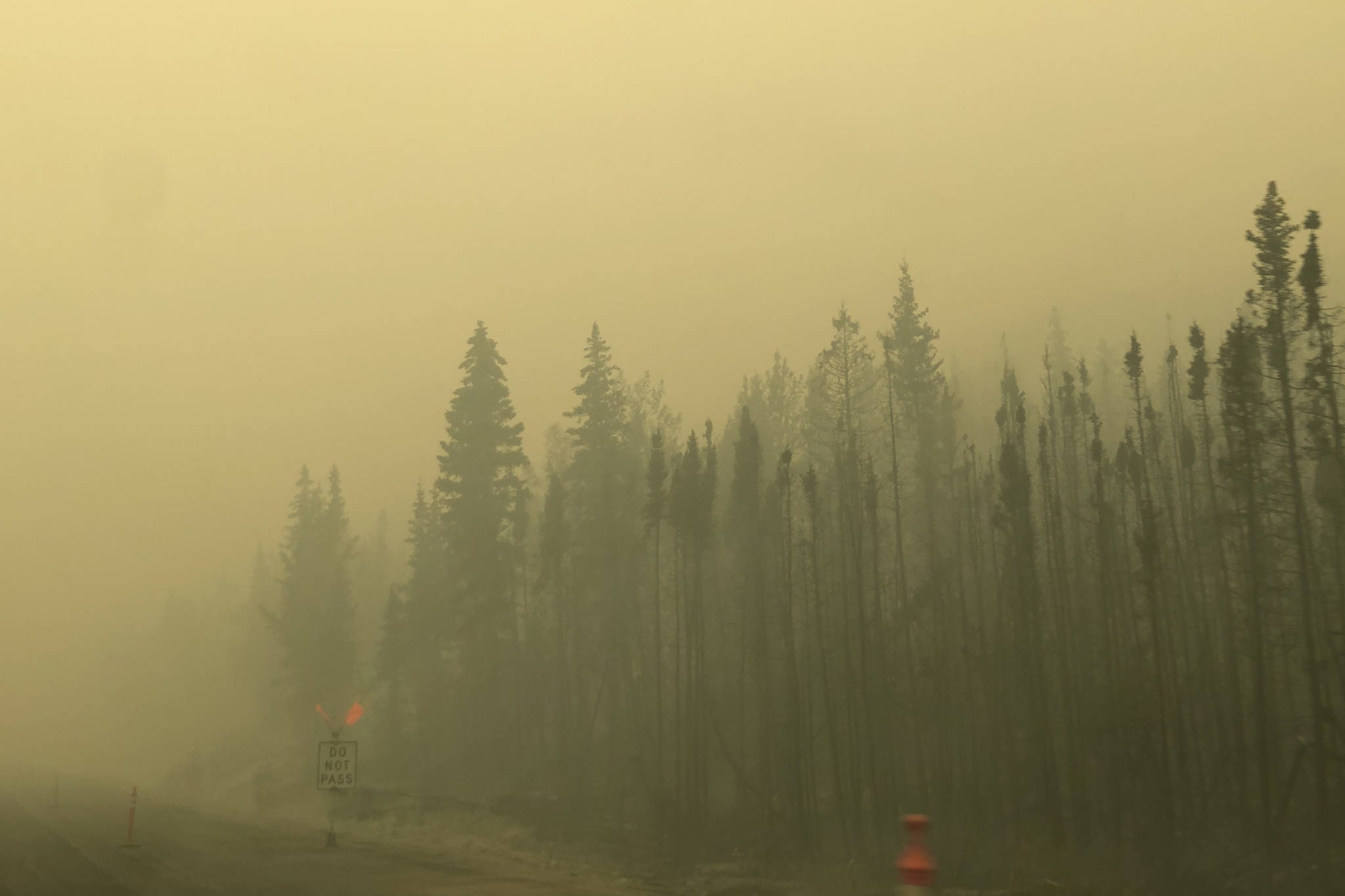Increasing summer temperatures across Southcentral Alaska, which are expected to rise faster than levels of moisture, suggest the region should expect future fire seasons comparable to 2019, when the Swan Lake and McKinley fires burned. That’s according to a study from researchers across Alaska that was published in Land, a peer-reviewed academic journal, earlier this year.
The research team was composed of 23 researchers, including 14 scientists from the University of Alaska Fairbanks and two from the University of Alaska Anchorage, as well as researchers from the U.S. Fish and Wildlife Service Alaska Region and the Alaska Interagency Coordination Center, among others.
The team set out to study whether or not Southcentral Alaska’s “highly unusual and consequential” 2019 fire season was at all caused by human influence on climatological factors. While the study concluded that there was minimal evidence to suggest human impacts on the climate resulting in 2019’s extreme fire season, it also found that Southcentral Alaska is at an increased risk for “severe” wildfires in future years.
“Wildland fire is a natural part of the boreal ecosystem so while fires cannot be prevented, their impacts can be managed through diligent preparation to minimize loss of property and lives,” researchers concluded in the article. “Studies like this can serve as evidence that community leaders can use to incentivize residents to invest in developing fire-safe strategies such as removing flammable items from around their homes and having an escape plan in increasingly fire-prone areas.”
The study says there is expected to be more severe fire seasons in future years because the rate at which moisture is increasing in the region will not keep up with how fast temperatures are expected to rise, which increases fire risk.
2019, for example, saw Southcentral Alaska’s hottest and driest June-August period in the last 40 years. Usually, rains drive out fire season by late July, however, 2019 saw persistent hot and dry weather on top of high-wind events, the study said. Those conditions also meant that firefighting operations needed to be extended by a month, with more than $70 million put to fire suppression costs.
To quantify fire risk, the study used Standardized Precipitation Evapotranspiration Index (SPEI), which measures surface wetness and therefore flammability. SPEI is primarily determined by air temperature and precipitation. The areas of Southcentral Alaska that were most affected by the 2019 wildfires saw the lowest cumulative June-August SPEI of the post-1979 period.
The Kenai Peninsula Borough Assembly passed a resolution last week indicating their support for the further development of fire fuel breaks throughout the borough and for the protection of fire-adapted communities (FAC), which the legislation defines as “informed and prepared citizens who collaboratively take action to reduce the risks of wildland fire.”
“A FAC understands that minimizing wildfire risk is a shared responsibility among all landowners from individual small-parcel owners to huge tracts of land managed by governing policies,” the resolution says, going on to praise the role of the Sterling fuel break project in protecting Sterling during the Swan Lake Fire, as well as the role of a fuel break in protecting the communities of Funny River, Kasilof and Soldotna during the Funny River Fire in 2014.
Kenai Peninsula Borough Land Management Agent Trevor Kauffman said Tuesday that they have seen fire behavior increasing in recent years and that, while fuel breaks are helpful in mobilizing firefighters and deploying firefighting resources in remote areas, they do not necessarily stop the forward movement of a fire. It’s “very unlikely” that a fuel break will stop a fire on its own, Kauffman said.
After reporting an “average” fire outlook this year, Alaska Division of Forestry Fire Management Officer Howie Kent said that it is important that people adhere to burn permits, which are required for people wanting to burn in the spring and summer, according to previous Clarion reporting. Those permits can be accessed at forestry.alaska.gov, as well as some businesses and community centers in Kenai and Soldotna.
The full study can be found on www.mdpi.com.
Reach reporter Ashlyn O’Hara at ashlyn.ohara@peninsulaclarion.com.

